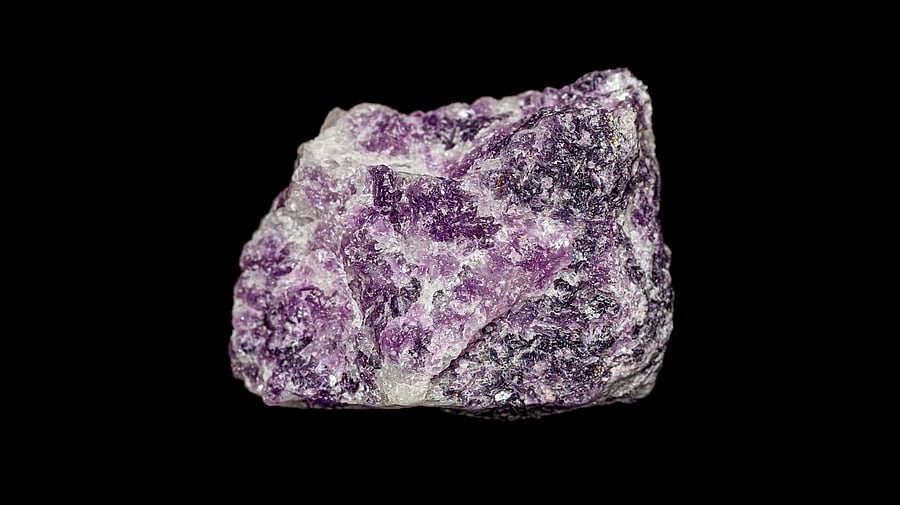
Natural rough Lepidolite, a phyllosilicate mineral, source of lithium and rubidium.
Credit: iStock Photo
New Delhi: The Union Cabinet chaired by Prime Minister Narendra Modi on Wednesday approved rationalisation of royalty rates on graphite, caesium, rubidium and zirconium with an aim to boost domestic production and promote the auction.
The royalty rates have been specified or revised as follows: caesium and rubidium will each attract a 2% royalty based on the average sale price (ASP) of the respective metal contained in the ore produced. Zirconium will have a royalty rate of 1% of ASP, while graphite will be charged 2% of ASP on an ad valorem basis for ore with 80% or more fixed carbon and 4% for ore with less than 80% fixed carbon.
Blocks of these four critical minerals will be auctioned, Information and Broadcasting Minister Ashwini Vaishnaw told media persons after the Cabinet meeting.
The decision of the Cabinet will promote the auction of mineral blocks containing caesium, rubidium and zirconium, thereby not only unlocking these minerals but also associated critical minerals found with them, such as lithium, tungsten, REES, and niobium, among others. The move is expected to boost domestic production and reduce import dependence and create employment opportunities.
Graphite, Caesium, Rubidium and Zirconium are important minerals for high-tech applications and energy transition. Graphite and Zirconium are also among the 24 critical and strategic minerals listed in the Mines and Minerals (Development and Regulation) Act, 1957 (MMDR Act), the statement said.
Graphite is a crucial component in electric vehicle (EV) batteries, primarily serving as the anode material, which enables high conductivity and charge capacity. However, India imports 60% of its requirement of Graphite. At present, 9 Graphite mines are working in the country and further 27 blocks have been successfully auctioned. Further, GSI and MECL have handed over 20 Graphite blocks which will be auctioned and around 26 blocks are under exploration.
Zirconium is a versatile metal used in various industries, including nuclear energy, aerospace, healthcare and manufacturing, due to exceptional corrosion resistance and high temperature stability. Caesium is mainly used in the high-tech electronic sector, particularly in atomic clocks, GPS systems, other high precision instruments, medical instruments including in cancer therapy, etc. Rubidium is used in making specialty glasses used in fibre optics, telecommunication systems, night vision devices etc the statement added
